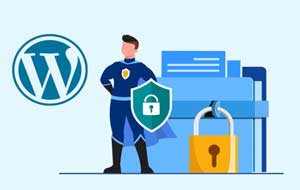Blog post: Online security

Blog post: Online security

![]()
 WordPress is an extremely popular platform—around 1 in 6 websites use it—making it a prime target for hackers.
WordPress is an extremely popular platform—around 1 in 6 websites use it—making it a prime target for hackers.
Fortunately, most hackers are opportunistic and lazy, so taking a few simple precautions can reduce your risk of being hacked to nearly zero.
Here are the most important precautions to take, listed by priority:
Many people reuse the same weak passwords over and over.
Hackers use enormous password lists containing thousands—and even billions—of the most commonly used passwords.
Here are just the first 24 examples to give you an idea of how powerful these lists can be:
|
|
|
Now imagine millions more. You can see why conventional passwords are no longer effective.
The best solution is to create long, complex, unique passwords for every account.
But managing all those complicated passwords quickly becomes impossible to handle manually.
The solution is called “RoboForm”—a clever little tool that integrates directly into your browser.
RoboForm generates strong passwords on demand and automatically fills in forms with a single click.
It securely stores your passwords, encrypted, directly on your computer.
Practical, discreet, and easy to use, RoboForm will quickly become indispensable in your everyday online life.
Most automatic WordPress installations use “admin” as the default username. Changing it to something unique will significantly reduce your risk of being hacked.
Since WordPress doesn’t let you change usernames directly, you’ll need to:
– Create a new user with Administrator rights.
– Log out of your old admin account.
– Log in with your new username.
– Delete the original “admin” account.
By default, many WordPress themes display your username with each post, making it easy for hackers to harvest.
To hide your username:
– Add a first name (or nickname) to your user profile.
– Select this name in the “Display name publicly as” field.
– Save your changes.
Now, only your chosen display name appears publicly, while your actual username stays hidden.
A small plugin called “Limit Login Attempts” can block IP addresses after repeated failed login attempts.
It’s intuitive, easy to use, and works well with its default settings—no complex configuration required.
WordPress regularly releases updates to patch vulnerabilities exploited by hackers.
Always keep your WordPress installation and plugins updated to protect your blog.
Even with all precautions in place, accidents can still happen.
Making regular backups ensures you’ll never lose your blog data.
Many plugins can automate backups—just schedule them based on how often you update your blog.
By applying these 6 simple measures, you’ll sleep much easier, knowing your WordPress site is safe from most hacking attempts. Hackers will simply move on to easier targets.
How to protect yourself from scams:

This article explains the key steps you should follow to avoid most forms of online fraud and scams.
See the article “How to protect yourself from scams”.
This article will show you the most important factors to consider when choosing antivirus software.
See the article “Which Antivirus to Choose”.